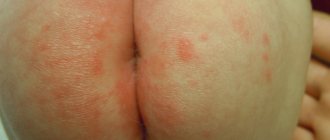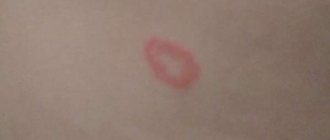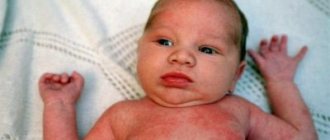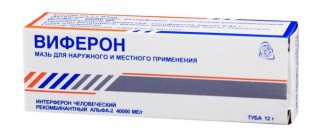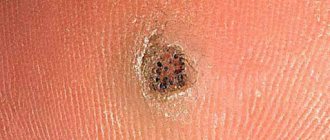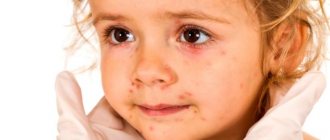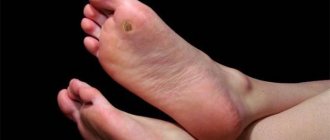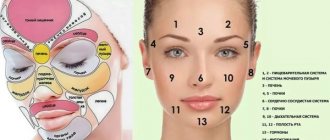A thorn or plantar wart is an infectious formation. Without timely medical care, the growths cause discomfort and cause gait disturbances. Treatment of spine in children is a responsible and labor-intensive process. The sooner therapy begins, the greater the chances of successful recovery.
What is a thorn
A thorn on the foot (it is not recommended to treat a wart yourself in children due to the risk of tissue damage and infection on adjacent, healthy areas of the skin) is a benign neoplasm of viral origin, most often appearing on the toes and feet.
In appearance, the pathology is very similar to a callus, but differs from keratinized skin in its heterogeneous structure, pain and method of occurrence. A plantar wart is the result of penetration and activation of the human papillomavirus in damaged tissues.
Gradually growing, the root of the spine penetrates deep into the body, and the neoplasm itself spreads to neighboring areas of the skin. In most cases, the wart does not develop into a malignant tumor. The skin around the growth remains healthy and has the usual pinkish tint.
Distinctive features of the spine:
- A plantar wart is a neoplasm protruding above the surface of the skin with a heterogeneous structure and clear boundaries.
A bunion on the foot could be a wart or callus. - In the middle of the growth, black, pointed dots are visible, which are clogged blood vessels.
- If pressure is applied to the spine, pain appears that interferes with movement.
- With constant injury, the viral pathology moves to neighboring areas of the skin, grows deep into the tissue, reaching the nerve endings.
- In case of incomplete removal, relapse of the disease is possible.
Use of medications: ointments and cauterizing liquids
Surgery is painful and frightening for most children. And due to their age, not all children can have formations on their soles and/or palms removed.
First, it is recommended to get rid of such “decorations” with the help of medications. And here the pharmaceutical industry comes to the rescue, in its arsenal there is a wide selection of tools.
Keratolytics
Products that soften the surface of the wart, break down keratin (a protein with mechanical strength) and promote exfoliation of the skin on the treated area. As a result, the process of skin cell renewal is stimulated, which leads to its restoration.
- Uroderm is an ointment. The instructions do not indicate that the product should not be used in children.
- Salicylic ointment is an effective medicine. However, according to the instructions in the drug reference book, Vidal is contraindicated for use in childhood.
Preparations with cauterizing properties
Promote the coagulation of skin proteins and mummification (intravital drying) of altered cells.
- Mountain celandine - balm (dark solution). Contains extracts from herbs: celandine, string, gentian, golden rhododendron and goose foot. The drug is not recommended for use in children under five years of age.
Do not confuse Mountain Celandine with SuperClandestine - a chemical preparation that has nothing in common with a natural product, but contains sodium and potassium hydroxide (a clear solution).
- Solcoderm is a solution for external use in children over five years of age. Apply to skin formations with a special applicator only by a doctor. It is unacceptable to use the drug independently at home.
- Verrucacid is a liquid for external use that is not used in children under seven years of age, so the product is not suitable for children.
Note to mom
Carry out all procedures at home with drugs that have cauterizing properties, avoiding contact of the solution with the mucous membranes and healthy areas of the baby’s skin. In addition, it is advisable to process the formations in a well-ventilated area, since the liquids have a pungent odor.
Antiviral ointments
- Riodoxol is available as a 0.25% or 0.5% ointment. The percentage of ointment that is used in a child is determined by the doctor. The instructions do not indicate that the drug is contraindicated for use in children.
- Viferon ointment. The main active ingredient is synthetic interferon, which not only fights viruses, but also stimulates local immunity. Prescribed from the age of 12 months.
- Oxolinic 3% ointment. The drug is contraindicated for use in children under 3 months.
To achieve a better effect, as well as to avoid the development of viral resistance to antiviral drugs, it is sometimes advisable to alternate ointments every 10 days.
Cryotherapy products
The virus is killed and the wart is removed by freezing the modified tissue at a temperature of minus 57 degrees.
Cryopharma is an aerosol containing propane and dimethyl ether. The product can be used at home. Contraindicated for use in children under 4 years of age.
The following drugs are only a part of the drugs approved for the treatment of palmoplantar warts in children. But don’t rush to immediately go to the pharmacy for a miracle cure. It is better to consult a doctor who will prescribe the drug and also recommend a regimen and duration of treatment in accordance with the child’s age, number and size of formations.
Types of spines in a child
Subcutaneous warts are classified depending on the location of the pathology.
In children, spine may occur:
- On the foot. The most common area for diagnosing a growth. The tumor occurs when a damaged surface comes into contact with the HPV virus. Most often, this pathology is found in minors who visit sports pools.
- On hands. Due to the structural features of the limbs, the spine that appears on the hands cannot grow into the deep layers of the skin. The wart is removed with antiviral ointments (or drops).
- On the phalanges of the toes. The spine growing in this area causes painful inconvenience while running or walking, but is not able to penetrate into the body.
- On the heel. The most dangerous location of a plantar wart. Due to intense physical activity, the growth that appears on the heels always cuts deeply into the skin. A wart can only be removed using minimally invasive or surgical methods.
- Under the nail. The most difficult location, requiring partial or complete removal of the nail plate to gain access to the roots of the tumor.
A subcutaneous wart is also classified depending on the type of strain of human papillomavirus infection (type 1, 2,4) that served as the starting point for its occurrence. The spine, which appears due to the activation of HPV type 2, in rare cases can degenerate into a malignant neoplasm.
The spines differ:
- located on the surface of the skin;
- protruding beyond the dermis;
- with a taproot growing inside the body.
The most dangerous and requiring immediate treatment are mosaic clusters - a large accumulation of spines that affect a large area of the body and cause severe pain when walking.
Or maybe it's better to combine?
Did you successfully get rid of the thorn and it never bothered your baby again? Congratulations! However, no child is immune from relapse (return of symptoms of the disease) after removal of formations by chemical or surgical means, since the papillomavirus often remains in the child’s body for a long time.
What to do? The question is not rhetorical. There is an answer: improve the functioning of the baby’s immune system.
The best thing is to provide your child with a nutritious diet without preservatives and dyes, and also to take more walks in the fresh air. After all, our body is a self-regulating system that will find the right solution itself.
But such measures do not always lead to the desired result, so it is necessary to intervene in the body’s functioning artificially.
If necessary, the doctor prescribes medications according to age:
- Vitamins - for example, Vitamins or Alphabet. Read more about vitamins for children in our articles and
- Antiviral agents that also improve the functioning of the immune system. It is believed that interferon drugs (for example, Viferon) and Groprinosin (Isoprinosine) have good effectiveness against HPV.
- Immunostimulants - for example, Lykopid.
Stages and degrees of spine
At an early stage, the spine is a spherical growth with a rough surface and black inclusions.
A plantar wart that rises above the cat is removed using gentle methods, including:
- use of antiviral ointments;
- application of chemicals;
- baths with medicinal herbs;
- medical plaster "Salipod".
In 30% of all cases in children, a single spine disappears on its own after changing insoles, shoes and taking antiviral drugs.
A plantar wart that has grown deep into the skin is removed on an outpatient or inpatient basis.
An old spine can be removed:
- influencing the neoplasm with liquid nitrogen;
- pinpoint burning of the growth tissue with electric current or laser;
- surgical method.
Large neoplasms (mosaic warts) require step-by-step removal of thread-like endings with a scalpel, followed by sending the removed biomaterial for histological examination.
If hygiene methods are neglected, a fungal or bacterial infection may join the lesion, provoking an acute inflammatory process, accompanied by suppuration of the skin.
"Grandma's Remedies" from Nature's Pantry
You will find many recipes on the Internet using garlic, acetic acid and other ingredients. Not all of these methods are suitable for use on children, as they may cause burns to children's delicate skin.
Still, there is one method that dermatologists recommend for painless removal of spines in older children: the use of celandine, which also has antiviral properties and promotes tissue healing.
Fresh celandine juice is used. Moreover, to extend the period of use, you can mix freshly squeezed celandine juice with alcohol (alcohol extract) or glycerin at home.
The method has a significant drawback: only celandine that blooms from May to August-September can be used for treatment. Therefore, this method is not entirely suitable for a city dweller. In this case, you can use the pharmaceutical drug Mountain Celandine.
Symptoms of spine in a child
A bunion on the foot (a wart that appears on a child’s body can be treated on an outpatient basis by going to a children’s clinic at your place of residence) initially causes virtually no discomfort and resembles an ordinary callus. Gradually, the neoplasm grows, becomes coarser, turns yellow, causing severe pain to the baby while running and walking.
Symptoms of plantar warts in minors:
- Stitching pain that occurs when walking and running. Any pressure on the growth is accompanied by tingling.
- The appearance of a yellow wart with a heterogeneous structure. The spine consists of many filamentous processes resembling thorns, with black inclusions, resulting from blockage of injured vessels.
- Observation of a growth on the baby’s leg, with a funnel-shaped structure. The pathology is a “furry” depression, inside which pus can accumulate.
Without treatment, the spinal shaft grows inward, affecting the nerve endings and causing additional pain, both during movement and at rest.
Reasons for the appearance of spines in a child
Spine on the foot (treatment of the disease is carried out depending on the stage and form of development of the pathology) manifests itself as a result of activation of human papillomavirus types 1, 2 or 4 in the body. Bacteria that penetrate microcracks in the skin are activated if the child’s immunity is reduced or the child neglects personal hygiene measures.
Children who suffer from:
- diabetes mellitus;
- lack of vitamin A;
- liver dysfunction;
- obesity;
- hyperhidrosis;
- frequent stress.
Most often, plantar warts occur in minors:
- visiting swimming pools, saunas, sports sections;
- neglecting the rules of personal hygiene;
- wearing shoes that are tight or have been previously used by other children.
Diagnosis of spine in a child
To diagnose a spine, you need to visit a dermatologist. The specialist examines the child’s foot, conducts dermatoscopy, during which he studies the structure and composition of the growth.
The examination procedure helps to establish the correct diagnosis and distinguish a plantar wart from cutaneous hyperkeratosis and calluses. The diagnosis is made free of charge in a children's clinic at the place of residence or in a paid medical center (appointment cost from 500 rubles).
To determine the depth of the spine, an ultrasound scan of the foot is performed (from 600 rubles). As an additional study, a PCR test can be prescribed to determine the presence of antibodies to HPV in the blood and the type of infection (from 1,500 rubles).
In case of severe growth of a plantar wart or the presence of HPV type 2 in the baby’s body, an additional histological examination of parts of the growth is prescribed to exclude the malignant nature of the neoplasm.
When to see a doctor
A splint found on a child’s foot requires urgent medical attention to make a diagnosis and begin treatment. It is best to visit a dermatologist at the initial stage of the disease. A small growth can be easily eliminated with the help of medicinal ointments, patches and immunomodulators.
If the child complains of severe pain when walking and a large accumulation of plantar warts is detected, a visit to the doctor should be carried out immediately to avoid a secondary infection. The mosaic clusters that appear require additional consultation with an immunologist, as they indicate a strong activation of HPV, which appeared after the weakening of the lymphocytic system.
How to distinguish a spine from other formations
To make a diagnosis, a thorough examination of the body is required.
| Name of growth | Characteristic features of a child |
| Corn | Its anatomical structure, clinical picture, and treatment methods differ from the spine. The formation has a homogeneous structure without thread-like fibers or a funnel-shaped depression. It consists of a thick layer of epithelial cells. There are no hairs on the surface. Education does not cause painful sensations. After taking a bath, the callus is steamed and easily removed with a nail file or scissors. Orthopedic shoes for a child will reduce the risk of its occurrence. |
| Corns | The disease causes human papillomavirus infection. Corns occur as a result of traumatic exposure or uncomfortable shoes. A benign element is a layer of dead epithelial cells. This, like the spine, brings pain to the child when walking. Discomfort increases with palpation examination. Timely treatment, proper foot care, and selection of shoes help prevent the recurrence of corns. |
After differential diagnosis of epidermal formations, the main diagnosis is determined. They select treatment to combat the disease.
Prevention of spines in children
Detection of a spine means the penetration and activation of HPV in the baby’s body.
You can reduce the likelihood of pathogenic bacteria entering by:
- a child’s use of a personal towel in kindergarten, school, or sports section;
- the baby wearing his own shoes that fit;
- use of rubber slippers in the pool;
- increasing the immunity of a minor suffering from diabetes, obesity, liver dysfunction;
- instilling in the child the basics of personal hygiene and the need to cleanse feet every night.
Parents need to monitor the condition of the skin on the feet of their child, promptly treat microtraumas and remove drifts that can cause infection.
Spine treatment methods
Treatment of the spine is carried out in two stages:
- removal of growth using drugs or minimally invasive techniques;
- the use of immunomodulators.
Medications
Medicines are used to cauterize the spine that has not grown deep and increase the baby’s immunity.
| Name of the medicine | Pharmacology | Dosage and duration of treatment | Price |
| Chemicals used to remove spines
| |||
| Solcoseryl | Necrotic solution based on oxalic, acetic, and lactic acid. | The drug is applied to the steamed and dried growth. After using the medicine, the surface of the wart darkens, dries out and falls off spontaneously. The solution is used for 4-6 weeks. | 890 rub. |
| Collomak | A chemical used to soften the top layer of the spine. | The neoplasm, steamed after hot water, is lubricated with the drug 2 times a day. | 320 rub. |
| Cryopharm | Product for home cryotherapy. Freezes and eliminates warts by exposing tissue to liquid nitrogen | The applicator is pressed against the spine for 10 seconds. Under the influence of cold nitrogen, the plantar wart turns pale, thickens and is rejected. | 800 rub. |
| Fresol | A chemical preparation based on phenol and tricresol. It is used for cauterization of papillomas, genital warts and dry warts. | The medicine is applied with an applicator to the spine, which has been cleared of keratinized particles. The manipulation is repeated 7-10 times after the substance dries | 60 rub. |
| Salipod | A patch containing salicylic alcohol and phenol. Burns and removes subcutaneous growths that have not grown inside the tissue. | Stick on the spine for a period of 7-12 hours. | 90 rub. |
| Medicines for immunomodulatory therapy
| |||
| Viferon ointment | Thanks to human interferon alpha, which is included in the composition, it increases the activity of the body's lymphocytic system. | Apply to the foot 3-4 times a day. Course of treatment 5-7 days | 189 rub. |
| Gel Panavir | A polysaccharide that activates the body's antiviral forces, triggering the natural processes of healing and regeneration of damaged tissues. | Used to lubricate the growth 2-3 times a day | 800 rub. |
| Isoprinosine | A purine derivative with immunostimulating and antiviral properties. | Tablets for oral administration. Use 50 mg 3-4 times a day (5-14 days). | 900 rub. |
| Novirin | Used when it is necessary to increase immunity in case of viral infections. | The tablets are taken after meals. The dose is calculated according to the formula 5 mg/1 kg of baby’s weight, divided into 3-4 doses. Duration of treatment is 5-7 days. | 500 rub. |
Medicines are used after a doctor's prescription. Chemicals that burn the spine should not be used in children with diabetes.
Traditional methods
Alternative medicine is used with extreme caution and only after visiting a dermatologist. With self-treatment, it is impossible to control the depth of the ingrown rod, as a result of which any incorrect treatment can provoke severe growth or degeneration of the wart.
Medicinal herbs and infusions are prescribed only externally (in the form of compresses and lotions):
- A mixture of beaten egg, 50 ml of vinegar and 20 g. vegetable fat is infused in the refrigerator for 12 hours. The resulting suspension is applied to the spine (for 1 hour), and then washed off with running water. The treated wart is lubricated with cream.
- A crushed clove of garlic is combined with horseradish root ground into porridge and placed on the growth. The mixture is fixed with a bandage and left overnight.
- 20 gr. vinegar mixed with flour until smooth. The resulting composition is spread over the spine and fixed with a bandage. The compress is applied for 7-12 hours.
- Ground burdock and young nettle leaves are taken along with the juice and applied to the growth steamed in hot water.
- Lotions made from an alcoholic infusion of potato flowers (the suspension must be kept for at least 1 month) can help deal with a newly appeared wart.
- A small spike is steamed for 30 days and then treated with celandine juice (at least 3 times a day).
Other methods
In case of deep root germination, minimally invasive techniques are used to remove the spine, including cryotherapy, electrocoagulation, and laser therapy.
- During cryotherapy, the spine is treated with liquefied nitrogen (no more than - 200⁰C). Under the influence of very low temperatures, living tissues are destroyed along with the filamentous roots of the plantar wart. A painful neoplasm that has undergone cryotherapy turns white, thickens and falls off. This procedure does not require additional preparation, is fast, economical, but is accompanied by a long rehabilitation period.
- Electrocoagulation is performed only under local anesthesia. An electric current is directed to the neoplasm located on the baby’s foot. The subcutaneous wart is burned out, the bleeding is stopped by cauterizing the damaged blood vessels. If necessary, the procedure is repeated 2-3 times. Injured skin heals in 7-14 days.
- Laser therapy is accompanied by unpleasant sensations and is performed only under local anesthesia. Laser beams precisely burn out the spine without damaging the surrounding tissue. The rehabilitation period after the procedure is 10-15 days. The operation leaves no visible marks.
- During radio wave therapy, tissues are cut with a radio wave knife to remove the spine. At the same time, damaged vessels are cauterized. The wound healing process takes 15-20 days. A small scar remains at the site of the growth.
If the pathology grows, surgical removal of warts is used. Using a scalpel, the surgeon excises the damaged tissue along with the roots of the tumor. This method requires a long rehabilitation period, is carried out only in a hospital setting and is extremely undesirable for treating a child.
After using minimally invasive methods, the baby undergoes rehabilitation therapy, during which:
- For the first 3 days, the child is not allowed to get out of bed. In the next 5 days, the baby's physical activity should be significantly limited.
- A sterile bandage with anti-inflammatory ointment is applied to the burn site. The compress is changed 1-2 times a day.
- Until complete healing, a patch must be applied to the site of the removed spine to protect the tissue from additional damage.
How to treat a wart?
Removing spines on a child’s feet or hands requires consultation with a dermatologist. A specialist based on the condition of the tumor and the extent of its spread prescribes appropriate treatment for the spine. It can be removed with medication and surgery. There are 3 methods of drug therapy: necrotizing drugs, keratolytics, freezing agents.
Medication
Necrotizing drugs
Their action is based on cauterization and necrosis of the growth in the child. This action is caused by the action of aggressive acids. Medicines of this type are not used to remove a bunion on the foot of young children. Superclean liquid is one of this group of products. It should be applied with a cotton swab to the steamed wart, having previously lubricated healthy areas of the skin with the cream. Apply the ointment for 2-4 days. In addition to this, this type of medicine includes Ferezol and Solcoderm.
Keratolics
They act more gently. The principle of their action is exfoliation of keratinized tissues of the growth. Argonica silver ion concentrate is a keratolic. This brown liquid contains distilled water and cluster silver. Before using the drug, you should consult a dermatologist, because the drug has contraindications - pregnancy, lactation and individual intolerance. “Argonica” is applied to steamed skin and sealed with a band-aid. Use it until the spine is completely removed. A lapis pencil was also created on the basis of silver.
You can get rid of spines in a child by freezing the area with a special medication.
Freezing agents
"Cryofama" is one of these drugs. He freezes the growth with liquid nitrogen. Using a special brush, apply the product to the affected area and press for 10 seconds. During the process, a burning sensation occurs, but this is a normal reaction to the cold. After the procedure, the burning sensation disappears, the skin acquires a normal color. After 10 days, the spine disappears, and normal skin appears in its place.
Surgical methods for removing a spine in a child
When pharmaceutical drugs are powerless, special medical procedures can help treat spine in a child. This category includes:
- Laser removal is the most common and effective method. It is painless and the scar is almost invisible.
- Cutting with a scalpel. As a result, a scar remains on the foot. There are cases of relapse of the disease.
- The wart is removed using high-frequency current burning. After the procedure, a wound appears that is disinfected.
- Cryodestruction - freezing the spikegi with liquid nitrogen. The method is a little painful, so it is better not to use it to remove a spine on a finger.
How to remove a thorn using folk remedies?
Lotions made from herbs, rhizomes, and fruits are good for healing spines in a child.
This method of treatment is considered an alternative to medications and is often used. In this case, you need to be careful to prevent burns and other injuries. To help remove the spine:
- Dandelion juice, celandine. They apply it to problem areas several times a day until the growth is completely removed.
- Horseradish helps remove the spine on the foot, on the sole. Its leaves are dried and ground into powder. Then pour hot water and leave for 2 days. Socks are soaked in the emulsion, they are put on and plastic bags are placed on top. The procedure is done at night, and in the morning the feet are removed and washed.
- Cement. With its help, the spine on the palm and finger is removed in a few days. Cement powder is rubbed into the sore spot and held until completely dry.
- Bulb. It is grated and soaked in vinegar for 2 hours. Then they bandage it until the growth occurs.
- A paste of raw potatoes, which is glued to the wart with an adhesive plaster, is wrapped in cellophane. It is better to do manipulations before bedtime.
- Cauterization with propolis will help quickly remove the growth.
Possible complications
A splint on the foot (the treatment of a neoplasm in the first stages can be carried out using traditional medicine, without additional trauma to the baby’s skin) requires urgent medical correction.
In most cases, plantar warts are benign in nature and disappear completely after treatment. Constant injury caused by intense physical activity can provoke the growth and degeneration of the spine into a malignant neoplasm.
In the absence of timely treatment, the root of the spine becomes denser and grows deep into the tissue, injuring the nerve endings and causing pain not only when walking, but also in a calm state.
An untreated spine is an opening for viruses and pathogenic microorganisms that cause suppuration of tissues to enter the child’s body.
A spike that appears on a baby’s foot requires urgent medical measures. Timely started therapy will eliminate the plantar wart with a minimum amount of pain that can traumatize the psyche of a minor, and prevent the occurrence of dangerous complications due to the growth or degeneration of the growth.
Article design: Vladimir the Great
